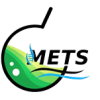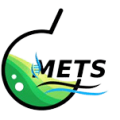Micro Biological Testing Labs
Required Testing for Micro Biology
- Food
- Water
- Air
Microbiological Testing for Food
Middle East Testing Services LLC, accredited, full service analytical laboratory, specializes in microbiological analysis for the food, beverage and environmental industries. Food safety is an integral part of the production of all foods and the shared responsibility of all segments of the supply chain. In recent times there has been increased awareness for the need to evaluate the food safety practices in the production of agricultural products.
Listeria
Enumeration of L. monocytogenes in positive food samples is performed on reserve sample by colony count on L. monocytogenes differential selective agars in conjunction with enumeration using selective enrichment in BLEB with subsequent plating on L.
Salmonella
This method, for the detection of all Salmonella serotypes in environmental samples, has been used primarily for finding Salmonella Enteritidis.
Bacillus cereus
Bacillus cereus is a group of ubiquitous facultative anaerobic sporeforming Gram-positive rods commonly found in soil. The spores frequently contaminate a variety of foods, including meat, eggs, and dairy products.
Enterobacteriaceae
It is a Gram-negative bacteria of a large family that includes Escherichia coli, Klebsiella, Salmonella, Shigella and Yersinia pestis.
Clostridium perfringens
It is a spore-forming gram-positive bacterium that is found in many environmental sources as well as in the intestines of humans and animals. Perfringens is commonly found on raw meat and poultry.
Vibrio parahaemolyticus
It is a curved, rod-shaped, Gram-negative bacterium found in brackish, saltwater, which, when ingested, causes gastrointestinal illness in humans. Parahaemolyticus is oxidase positive, facultatively aerobic, and does not form spores.
Aflatoxins
Aflatoxins are poisonous substances produced by certain kinds of fungi (moulds) that are found naturally all over the world; they can contaminate food crops and pose a serious health threat to humans and livestock.
Histamine
Histamine is an organic nitrogenous compound involved in local immune responses, as well as regulating physiological function in the gut and acting as a neurotransmitter for the brain, spinal cord, and uterus.Histamine is involved in the inflammatory response and has a central role as a mediator of itching.
Lactic acid
Lactic acid is an alpha-hydroxy acid (AHA) due to the presence of carboxyl group adjacent to the hydroxyl group. It is used as a synthetic intermediate in many organic synthesis industries and in various biochemical industries. The conjugate base of lactic acid is called lactate.
Pseudomonas aeruginosa
Pseudomonas aeruginosa is a common encapsulated, Gram-negative, rod-shaped bacterium that can cause disease in plants and animals, including humans. A species of considerable medical importance.
Staphylococcus aureus
Staphylococcus aureus is a Gram-positive, round-shaped bacterium that is a member of the Firmicutes, and it is a usual member of the microbiota of the body, frequently found in the upper respiratory tract and on the skin.
Vibrio cholerae
Vibrio cholerae is a Gram-negative, comma-shaped bacterium. The bacterium’s natural habitat is brackish or saltwater and attach themselves easily to the chitin-containing shells of crabs, shrimps, and other shellfish.
Coliforms
Coliforms count is a hygienic indicator and high level of coliform counts generally indicates unsanitary condition or poor hygiene practices during or after food production. … It must be stressed that some members of coliforms are present as normal inhabitants in the environment, e.g., soil, vegetation and water.
Viable count
Viable count is a method used in cell culture to determine the number of living cells in a culture. This is different from other cell counting techniques because it makes a distinction between live and dead cells.
Escherichia
It is a genus of Gram-negative, non-spore-forming, facultatively anaerobic, rod-shaped bacteria from the family Enterobacteriaceae.
Mold & Yeast
Microbiological Testing for Water
According to the World Health Organisation (WHO) more than 3.4 million people die each year from waterborne disease, most of whom are young children. In addition, it is estimated that around 50% of the population in developing countries is suffering from a water-related disease at any one time.
That makes infections contracted from contaminated water supplies a leading cause of illness and death worldwide and helps to explain why the provision of safe drinking water is such a high priority for governments and aid agencies.
Heterotrophic plate count
Heterotrophic plate count (HPC) is a method that measures colony formation on culture media of heterotrophic bacteria in drinking water. Thus the HPC test (also known as Standard Plate Count) can be used to measure the overall bacteriological quality of drinking water in public, semi-public and private water systems.
Coliform
Coliform bacteria are a large group of bacteria that are found in very high concentrations in the fecal matter of warm blooded animals such as dogs, deer, and humans. Some coliform bacteria can cause disease in humans, but most do not. But, when any coliform bacteria are detected in a water supply it is a clear indication that the water has been contaminated with animal fecal matter. Fecal matter may contain other, much more dangerous organisms. So, coliform bacteria are classified as an indicator organism. The presence or absence of coliform bacteria suggests the presence or absence of more dangerous disease-causing agents in the water.
Fecal Coliform
A fecal coliform is a facultatively anaerobic, rod-shaped, gram-negative, non-sporulating bacterium. Coliform bacteria generally originate in the intestines of warm-blooded animals.
Legionella
The genus Legionella is a pathogenic group of Gram-negative bacteria that includes the species L. pneumophila, causing legionellosis (all illnesses caused by Legionella) including a pneumonia-type illness called Legionnaires’ disease and a mild flu-like illness called Pontiac fever.
pseudomonas aeruginosa
Faecal streptococci
Escherichia coli
Legionella water
Endotoxin
Microbiological Testing for Air
The most important sources of contamination in any specific manufacturing operation and they will probably come up with people, raw materials and water as the top three. This is a perfectly reasonable response, but there is one other factor that is always present and that is air. Viable microorganisms can be found in the atmosphere almost anywhere – bacterial spores can be isolated from the jet stream several miles above the Earth’s surface – but the microbiology of the air is sometimes overlooked.
Viable count
Viable count is a method used in cell culture to determine the number of living cells in a culture. This is different from other cell counting techniques because it makes a distinction between live and dead cells.


